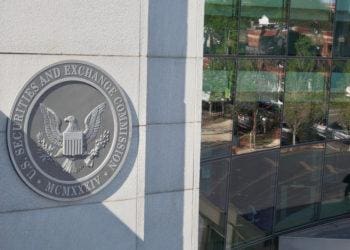Financial Reporting Issues
Last month, Jim DeLoach shared four enterprise, process and technology risk issues for audit committees to consider this year. This month’s column focuses on financial reporting – the heart of the audit committee’s agenda. Read on for six additional issues every audit committee should be discussing.
By: Jim Deloach
In last month’s column, we suggested four enterprise, process and technology risk issues for audit committees to consider in 2017.
- Understand the business, technology and other risks that could affect financial and public reporting – Are emerging risks and changes in critical enterprise risks identified in a timely manner? Are cybersecurity, privacy/identity and other related issues adequately considered?
- Watch the warning signs related to the tone of the organization – Are the tone at the top and in the middle aligned and their impact on the organization considered?
- Consider whether the finance organization is contributing the value expected – Are capabilities of finance aligned with the company’s needs?
- Assist the internal audit function in maximizing its potential – Is internal audit performing to the expectations of the audit committee?
As financial reporting lies at the heart of the audit committee agenda, below we add six additional issues for audit committee members to consider. Our suggested agenda is based on interactions with client audit committees, roundtables we have conducted over the past year and discussions with directors at conferences and in other forums, including surveys we have conducted.
Check Progress on Adopting/Implementing the New Revenue Recognition Standard
The International Accounting Standards Board (IASB) and Financial Accounting Standards Board (FASB) have introduced a single comprehensive, principles-based model to conform revenue recognition across the globe, eliminate existing industry-specific guidance and expand revenue-related qualitative and quantitative disclosures. Public companies must adopt the standard no later than annual reporting periods beginning after December 15, 2017, including interim reporting periods therein (e.g., a calendar-year reporting company must adopt in 2018). Private companies must adopt the new rules no later than annual reporting periods beginning after December 15, 2018, including interim reporting periods therein. Therefore, this change is right around the corner.
Implementation of the standard, which has been out for quite some time, could be a significant undertaking. In the past, the message was to assess its impact fully and implement the necessary changes across the company’s processes, systems and controls and possibly even to its current contractual relationships. Now, the message is to get busy with sizing the impact and determining the transitional method to use – either retrospective or prospective – and whether to adopt early (in 2017) or just in time (2018). Executives and directors need to understand how the standard will impact their companies and how the finance team will meet the deadline for adoption.
Audit committees should assess where management stands with respect to taking the following steps to get on top of the transition process:
- Educate executives and their teams with overall responsibility for the transition.
- Assess the current revenue recognition policy against the standard and identify expected changes.
- Depending on the significance of accounting policy gaps, consider the need for involving others to assist in the transitional process.
- Perform a high-level analysis of any data gaps.
- Develop a high-level approach to the transition method.
- Identify and assess additional resource needs.
- Educate the decision-makers.
The above is a high-level summary. These steps and other important topics relating to the new standard, including the potential significant accounting and reporting changes, industry implications and a transition roadmap, are discussed in other venues. For example, an issue of Protiviti’s The Bulletin provides a more in-depth overview.[1]
Ensure the Company Is Monitoring and Reacting to Financial Reporting “Hot Buttons”
The audit committee should focus its inquiries on sensitive areas in which propriety of past accounting and disclosure practices can be and are being questioned. Audit areas in which significant deficiencies have been found in recent years in PCAOB inspections include auditing internal control over financial reporting, assessing and responding to risks of material misstatement, auditing accounting estimates (including fair value measurements) and deficient “referred” work in cross-border audits in certain countries. The PCAOB’s prior communications have also provided some indicators of potential emerging risks that the board’s inspection process will consider in the coming year – e.g., increase in mergers and acquisitions, undistributed foreign earnings and maintaining audit quality as the audit firm grows other business lines (consulting services). The audit committee should watch for further communications from the PCAOB regarding financial reporting “hot buttons.”
Revenue recognition, income taxes, fair value measurements and other areas involving significant accounting estimates involving a high degree of subjectivity are attracting greater scrutiny by the accounting firms, the PCAOB and the SEC. Therefore, they warrant the committee’s attention. Beginning with an understanding of the most significant accounting estimates and judgments in the company’s financial statements, the audit committee should inquire of management as to the processes used in making those estimates and judgments, whether there have been any significant changes in those processes or in the significant assumptions underlying the accounting estimates, the reasons for the changes and the effects of those changes on the financial statements. The audit committee should inquire as to whether there have there been any significant changes in trends or facts that may indicate estimates should change. If so, what changes were made and what are the financial statement effects?
The audit committee should expect the external auditor to discuss the quality of the company’s financial reporting, including the reasonableness of accounting estimates and judgments. Specifically, the committee should inquire of the external auditor as to the basis for concluding on the reasonableness of the critical accounting estimates and whether there is evidence of bias in management’s judgments related to accounting estimates. The committee should expect the external auditor to provide perspective on how the company’s accounting policies and methods compare with industry trends and leading practices.
Finally, the audit committee should ascertain whether – and how sufficiently – internal audit incorporates the company’s most significant accounting estimates and judgments in its audit plan.
Ascertain the Extent to which PCAOB Standards and Inspections Impact the Audit Process
The PCAOB continues to release standards and reports providing direction to the accounting firms on various matters pertaining to how they conduct their audits. In addition, the board has provided recommendations to audit committees regarding their interaction with management and auditors in an effort to enhance audit quality. Finally, the PCAOB issues reports on the results of its inspections specifically directed to the audits of individual firms. All of these releases may impact the demands and expectations issuers receive from their external auditors. Accordingly, they warrant the audit committee’s attention.
When the external auditor communicates the overall audit strategy, including timing of the audit, significant identified risks, significant changes from the prior year in the planned strategy and identified risks and other related matters, the audit committee should inquire whether PCAOB inspections of the firm and recent PCAOB guidance are impacting the audit approach in any significant way and, if so, how and in which areas. If the PCAOB has included the company’s particular audit in its scope, the audit committee should expect the auditor to outline any specific issues raised and the implications of the resolutions of those issues.
Last year, the PCAOB issued a communication to audit committees to provide insights from inspections of audit firms to assist audit committees in their oversight activities. The communication, the first in a series, highlights key areas of recurring concern in PCAOB inspections of large audit firms as well as certain emerging risks to the audit, along with targeted questions that committee members may want to ask their auditors on each topic.[2]
Inquire Whether Management Is Preparing to Address the New Lease Accounting Standard
Once the company implements the revenue recognition standard, it must contend with a new lease accounting standard a year later. The primary impact of this new standard will require lessees to recognize a lease liability and a right-of-use asset for all leases (except for short-term leases; i.e., duration of less than one year) as of the date on which the lessor makes the underlying asset available to the lessee (the so-called commencement date). A Protiviti Flash Report provides an overview of this new standard’s requirements.[3]
From a timing standpoint, public companies must apply the new lease accounting rules in fiscal years beginning after December 15, 2018 (2019 for calendar-year reporting companies), including interim periods therein. As with the revenue recognition standard, the timetable for private companies is delayed another year.
Audit committees should inquire of management as to whether the company has addressed the implications of this new accounting standard. The new standard introduces a right-of-use principle for lessees providing that a lease conveys the right to control the use of an asset, creating an asset and a liability that must be reflected on the lessee’s balance sheet. As a result, lessee companies must record assets and liabilities on their balance sheets. As with revenue recognition, they must implement new policies, processes, systems and internal controls.[4] For lessor companies, the good news is there will likely be less change.
Monitor Developments Relating to Modifications to the Auditor’s Report
The audit committee should watch closely the ongoing developments with the PCAOB’s 2016 reproposed standard requiring communication of critical audit matters arising from the audit of the financial statements.[5] Specifically, for each critical audit matter, the auditor would be required to:
- Describe the principal considerations that led to the determination that the matter is a critical audit matter;
- Describe how it was addressed in the audit; and
- Refer to the relevant financial statement accounts and disclosures.
A critical audit matter relates to accounts or disclosures that are material to the financial statements and involves especially challenging, subjective or complex auditor judgment. It must be communicated to the audit committee. If there are no critical audit matters, the auditor would so state that point in the auditor’s report.
If the PCAOB were to go forward with this new proposal, the relationship between the auditor and audit clients and their audit committees could be impacted. Thus, audit committees should be mindful of fresh developments on this front.
Consider Implications of SEC-Required Audit Committee Disclosure
Last year, the SEC issued a concept release exploring possible revisions to audit committee disclosures.[6] The question arises as to whether the audit committee would need to alter the company’s proxy and other disclosures with respect to its activities significantly should the commission adopt any of its suggested disclosure requirements. Since the comment period on the concept release expired in September 2015, as of this writing, the SEC has not posted any updates. The concept release emphasizes disclosure of the committee’s oversight of independent auditors, including specific potential changes to committee disclosure requirements related to its oversight of the auditor, process for appointing or retaining the auditor and evaluation of the qualifications of the audit firm and engagement team.[7]
While this concept release is far from the weight of a final rule, the audit committee should be familiar with its contents and should evaluate whether the forthcoming proxy disclosures warrant enhancement. To that end, we are aware that some accounting firms are encouraging their audit clients to voluntarily expand their audit committee report to include some of the additional disclosures discussed in the concept release. We are also aware that many companies have decided to sit tight and wait and see whether the SEC moves forward with rulemaking before taking any action. If the SEC acts, it will likely do so in the coming year; therefore, audit committees should be aware that the possibility exists for expanded disclosure of their activities.
Summary
2017 will pose interesting challenges for audit committees. While we do not consider here either audit committee best practices covered comprehensively in the public domain or issues for audit committees responsible for the board risk oversight process, the 10 topics we have suggested in this article (and its companion article last month) are significant matters warranting consideration by audit committees for inclusion on their coming year’s agenda.
[1] “Accounting for Revenue Recognition: A New Era,” Volume 5, Issue 12 of The Bulletin, available at www.protiviti.com.
[2] Audit Committee Dialogue, May 2015, available at http://pcaobus.org/sites/digitalpublications/Pages/auditcommittees.aspx.
[3] “Here We Go Again – Transitioning to the New Leases Standard,” Protiviti Flash Report, March 1, 2016, available at www.protiviti.com/US-en/insights/transitioning-new-leases-standard.
[4] Accounting will differ for capital/finance leases and operating leases; however, both types of leases would result in lessees recognizing a right-of-use asset and a lease liability.
[5] “PCAOB Reproposes Standard Requiring Auditor’s Report to Address Critical Audit Matters,” Protiviti, May 31, 2016, available at www.protiviti.com/sites/default/files/united_states/pcaob-flash-report-reproposed-standard-requiring-auditor-report.pdf.
[6] Note that concept releases are an important step in the rulemaking process, as they give the SEC an opportunity to “test the waters” before undertaking rulemaking.
[7] “The U.S. Securities and Exchange Commission Issues Concept Release on Enhanced Audit Committee Disclosures,” Protiviti Flash Report, August 27, 2015, available at www.protiviti.com.



 Jim DeLoach, a founding
Jim DeLoach, a founding 





